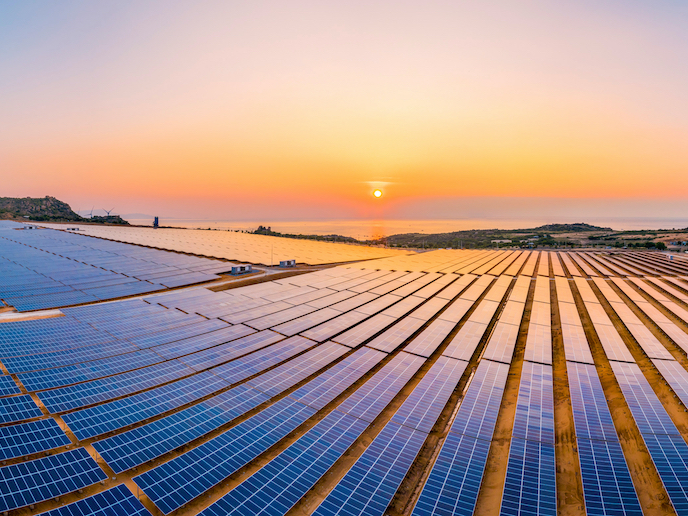Innovations suggest bright future for printed photovoltaics
Printed photovoltaics (PVs), which can be used to convert sunlight into electricity, offer numerous advantages. They are lighter than conventional wafers, and potentially cheaper to mass produce. As a result, they have been identified as a promising future source of renewable electric power. “The potential for cost reduction in printing PV modules could be significant,” explains Sol-Pro project principal investigator Stelios Choulis, founder and head of the Molecular Electronics and Photonics Research Unit at Cyprus University of Technology. “A roll-to-roll print production line has the potential to produce the same area in tens of hours as a conventional wafer production plant can in a year.” Printed PVs are now reaching the same efficiency values as conventional silicon PVs. A key challenge however is ensuring that organic and hybrid perovskite optoelectronic materials – materials used in the production of printed PVs – are environmentally stable over the long term. This is critical to ensuring that printed PVs can be part of Europe’s sustainable future. PVs have been identified as a key enabling technology for decarbonising Europe’s energy system. In fact, the EU needs to increase its PV capacity from 117 GW to over 630 GW by 2025 and 1.94 TW by 2050 in order to cover 100 % of its electricity needs from renewable energy.
Optimising solar cell performance
The Sol-Pro project, funded by the European Research Council, set out to address some of these challenges. Choulis and his team analysed printed PV materials and devices, with a view to optimising their cost competitiveness and lifetime reliability. New material systems were trialled and tested. Innovative optoelectronic synthetic material and processing methods were also developed, with the aim of precisely controlling critical elements, such as nanoparticle size and crystallinity. Such improvements were shown to improve PV device performance and reliability. “We were also able to show that many of the physical and engineering aspects that govern the behaviour of printed PVs occur at the PV device interfaces,” adds Choulis. “This enabled us to develop high-quality interfaces that optimise PV performance.” Novel surface interlayer treatment and active layer additive engineering methods were also shown to deliver dramatically increased lifetime performance, under accelerated heat and humidity conditions.
Future energy generation
Choulis is confident that the advances made in the Sol-Pro project will contribute positively towards the ongoing development of low-cost and large-area printing PVs for energy generation. The team successfully demonstrated how the heat lifetime performance of printed PVs can be improved through the incorporation of diffusion blocking layers within the PV device architecture. “These innovations can in practice now be applied to roll-to-roll PV printing manufacturing,” he notes. “They offer simple engineering routes to reducing the efficiency-stability-reliability gap of solution-processed PVs.” The Sol-Pro project also identified some persistent lifetime limitations. Choulis and his research team are currently partners in RoLA-FLEX, a recently launched EU-funded project that seeks to address this specific challenge. Cost-effective electrodes with novel printing methods will also be further addressed under this project. In the meantime, electronic material developers, chemical companies, printing equipment manufacturers and printed PV module producers all stand to benefit from Sol-Pro’s research. Much of the work has been published in open access scientific papers and represents an excellent starting point for the future development of long-life, reliable next-generation printed PVs.
Keywords
Sol-Pro, photovoltaic, PV, sunlight, electricity, electric, renewable, energy







